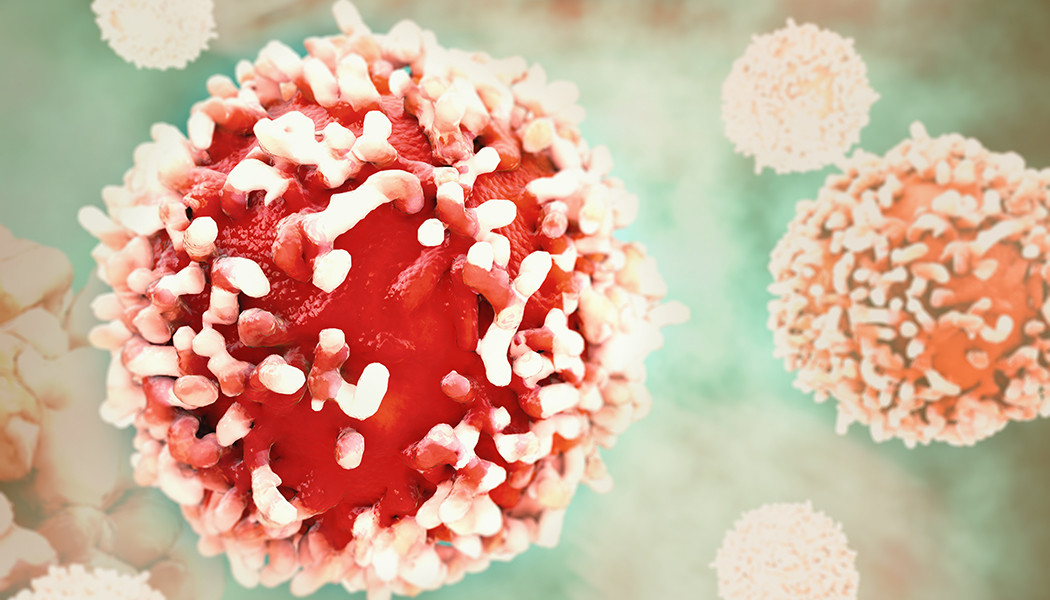The Hallmarks of Metastasis
It is the one word you do not want to hear in a cancer diagnosis: metastasis. It represents the figurative death-knell; once a cancer has spread to other parts of the body, survival rates plummet and what treatments do exist switch from curative to palliative. The dividing line metastatic cancer (stage IV cancer) can even be seen in funding, where 93 percent of monies go to preventative measures and early detection, rather than for therapies to combat cancer on the move within the body. And yet, in understanding the mechanisms of metastasis, the cure for this stage of cancer may be found. It is the reason investigators are taking a fresh look at exactly what happens when cancerous cells first break away from their host tumor.
Not surprisingly, metastasis is a complex biological process; it is actually an amalgam of several different events. Douglas Hurst, Ph.D., assistant professor in the UAB Department of Pathology, and Danny Welch, Ph.D., associate director of Education at the KUCC and NFCR funded scientist, conducted a literature review of more than 10,000 publications on metastasis, and found that in order for a cancerous cell to be “metastatic,” a cell has to exhibit the following qualities:
Motility and Invasion
By definition, metastatic cells must be able to migrate from the original tumor. Invasion, the defining feature of malignancy, is the capacity for tumor cells to disrupt the basement membrane (a thin, fibrous, extracellular matrix of tissue that separates the lining of an internal or external body surface from underlying connective tissue) and penetrate underlying stroma (the tumor’s support structure.). Motility alone is not sufficient; if a cell successfully breaks away from a tumor but subsequently dies, it is not considered metastatic.
Ability to Modulate the Secondary Site
Metastatic cancer’s ability to co-opt local tissue is a wonder of biology. In one fell swoop, cancer recruits new cells into the local microenvironment, elicits mobilization of immune/inflammatory cells, restructures other tissues, alters metabolism of surrounding stroma, cancels any antitumor actions by the immune system, manipulates the behavior of other cancer cells, alters the extracellular matrix, and restructures normal behaviors of other cells.
Plasticity
Primary or secondary, tumors are not static; on a cellular level they are, in fact, very dynamic. Cancer cells must adapt their metabolism to meet the demands that accompany rapid growth of the primary tumor and colonization of distinct metastatic sites. Moreover, neoplastic cells can alter growth rates of other cells, drug resistance, and metastatic capability.
Ability to Colonize Secondary Tissues
Colonization of secondary tissues is the standout feature of metastatic cancer. In the Hurst-Welch study, it is suggested that if a tumor cell or cells breaks away from the primary tumor and survives, but cannot take root elsewhere in the body, metastasis is not taking place.
Once metastasis occurs, survival rates can plummet as much as 90 percent, so it is critical to discern the events of the entire metastatic cascade. Recent research shows promise: Welch, an NFCR-funded fellow, and his team have discovered eight of the 35 known cancer metastasis suppressor genes. Further study based on these discoveries may lead to the design of molecules that either prevent metastasis from happening or arrest metastatic tumors in a dormant state. NFCR is one of the few bodies actively funding metastatic cancer research.
“Metastasis is the major cause of cancer morbidity and mortality,” Welch says. “If we could control metastasis, people would essentially survive longer and have fewer side effects from cancer. Although all therapies, beyond surgery, are to control metastasis, none are specifically targeting the process or the secondary lesions. Knowledge from studies of metastasis are also re-shaping how some clinicians approach treating advanced cancers.”
References:
Cancer Research UK. (2019). Stages of Cancer. Retrieved from: https://www.cancerresearchuk.org/about-cancer/what-is-cancer/stages-of-cancer
Hurst, Danny & Welch, Douglas. (2019). Defining the Hallmarks of Metastasis. Retrieved from: http://cancerres.aacrjournals.org/content/79/12/3011
Lehuédé, Camille, et al. (2016). Metabolic Plasticity as a Determinant of Tumor Growth and Metastasis. Retrieved from: http://cancerres.aacrjournals.org/content/76/18/5201
Perry, David. (2019). Metastasis Suppressor Genes. Retrieved from: https://www.nfcr.org/blog/metastasis-suppressor-genes/
ScienceDaily. (2019). New review identifies four hallmarks of cancer metastasis. Retrieved from: https://www.sciencedaily.com/releases/2019/05/190503112734.htm












